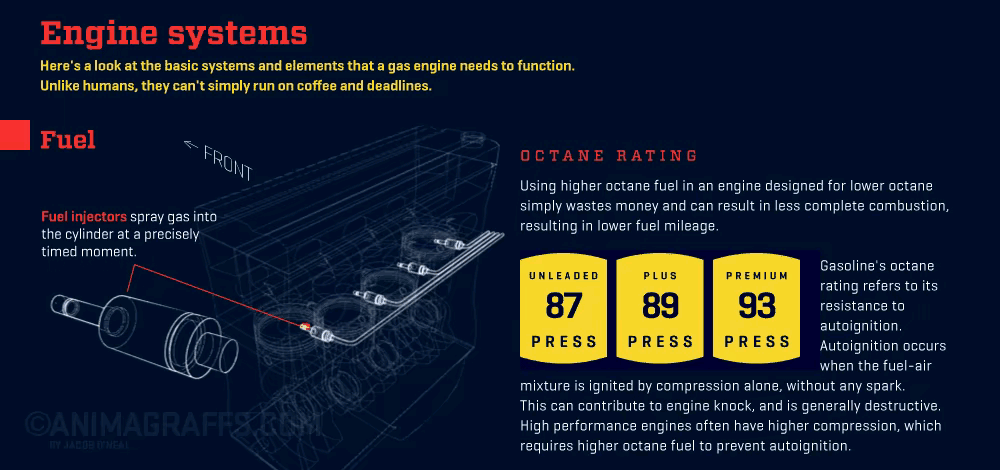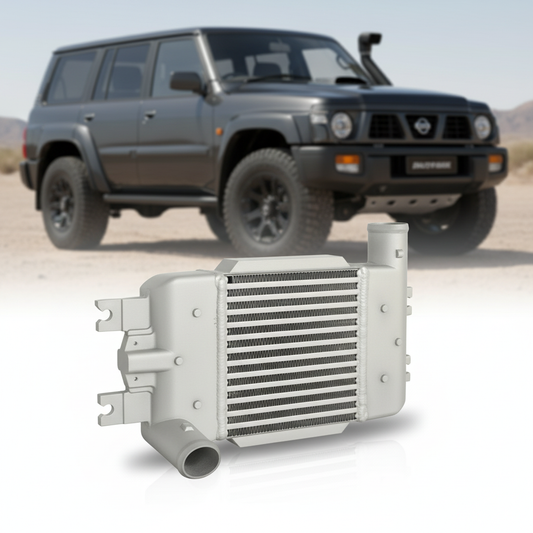To perform the four-stroke cycle, the engine relies on multiple essential components working in harmony:
-
Cylinder
Provides the space for the piston to move. Common arrangements include inline, V-shaped, and horizontally opposed (Boxer) configurations. -
Piston
Moves up and down within the cylinder, converting combustion energy into mechanical energy. -
Spark Plug
Ignites the fuel-air mixture, triggering the combustion process. -
Crankshaft
Converts the piston's linear motion into rotational motion to power the vehicle. -
Timing Belt or Timing Chain
Ensures synchronization between the valves' operation and the piston's movement, preventing collisions inside the engine. -
Valves
The intake valve controls the entry of the air-fuel mixture, while the exhaust valve manages the expulsion of burnt gases. -
Oil Pump
Supplies lubrication to reduce friction between components, extending their lifespan.

Common Engine Problems and Symptoms
During driving, various engine issues may arise, and their symptoms often help identify the source of the problem. Below are common problems, their causes, and corresponding solutions:
-
Symptoms:
- Severe vibrations while idling.
- Noticeable engine roughness or intermittent power delivery while driving.
-
Possible Causes:
- Fuel system issues: Clogged fuel injectors causing uneven fuel delivery.
- Ignition system issues: Worn-out spark plugs or damaged ignition coils.
- Engine mounts aging: Damaged engine mounts transmitting vibrations to the vehicle body.
-
Solutions:
- Clean or replace fuel injectors.
- Replace spark plugs or ignition coils.
- Replace worn-out engine mounts.
2. Power Loss
-
Symptoms:
- Slow acceleration and difficulty gaining speed.
- Lack of power when driving uphill.
-
Possible Causes:
- Air intake issues: Blocked air filters reducing air supply.
- Compression loss: Worn piston rings or poor cylinder sealing.
- Fuel delivery problems: Low fuel pump pressure or clogged fuel filters.
-
Solutions:
- Replace air filters.
- Repair or replace piston rings and cylinder gaskets.
- Inspect and replace the fuel pump or fuel filter.
3. Difficulty Starting the Engine
-
Symptoms:
- Requires multiple attempts to start, especially in cold weather.
- Fails to start altogether.
-
Possible Causes:
- Battery issues: Low battery voltage preventing the starter motor from functioning properly.
- Ignition problems: Deteriorated spark plugs.
- Fuel line air leaks: Air bubbles in the fuel line causing unstable fuel supply.
-
Solutions:
- Recharge or replace the battery.
- Replace spark plugs.
- Inspect the fuel lines and remove any air bubbles.
4. Exhaust Pipe Emitting Black or Blue Smoke
-
Symptoms:
- Black smoke with a strong fuel odor or blue smoke with excessive oil consumption.
-
Possible Causes:
- Black smoke: Incomplete combustion due to overly rich fuel mixture or insufficient air supply.
- Blue smoke: Oil entering the combustion chamber due to worn piston rings or valve seals.
-
Solutions:
- Adjust or replace fuel injection systems.
- Replace piston rings or valve seals.
5. Engine Overheating
-
Symptoms:
- High temperature gauge readings or coolant leakage.
- Noticeable heat or steam from the engine bay.
-
Possible Causes:
- Coolant issues: Low coolant levels or leaks in the cooling system.
- Pump or radiator problems: Malfunctioning water pump or clogged radiator.
- Thermostat failure: Preventing proper coolant circulation.
-
Solutions:
- Refill or replace the coolant and fix any leaks.
- Repair or replace the water pump or clean the radiator.
- Inspect and replace the thermostat if necessary.
How to Maintain Your Engine for Optimal Performance
-
Regularly Check Oil and Coolant Levels
Ensure proper lubrication and cooling to prevent excessive wear or overheating. -
Replace Air and Fuel Filters
Blocked filters can reduce airflow or fuel supply, negatively affecting combustion efficiency. -
Inspect Spark Plugs and Timing Belts
Replace spark plugs regularly to maintain ignition performance, and replace timing belts according to the recommended mileage to avoid unexpected failure. -
Monitor Unusual Driving Symptoms
Vibrations, power loss, or abnormal noises may indicate engine problems that need immediate attention.
Conclusion
The engine is a complex and precise mechanical system requiring coordinated operation of multiple components. By understanding its principles, core components, and common problems, you can maintain your vehicle more effectively and diagnose issues quickly. Regular maintenance not only extends the lifespan of your engine but also ensures a safer and more comfortable driving experience. If an issue cannot be resolved on your own, consult a professional mechanic promptly.






